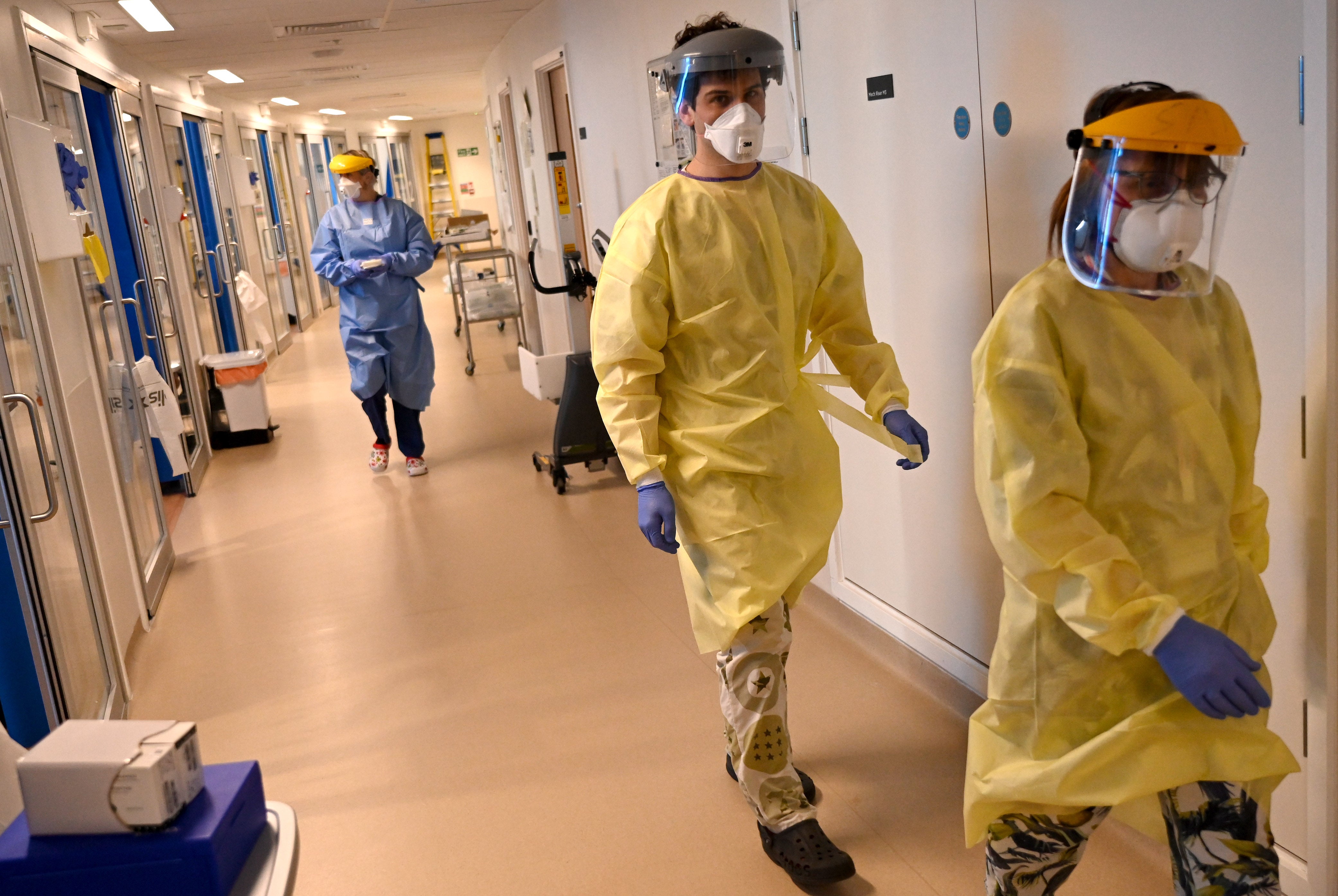Analysis: Fears for the NHS and widespread deaths forced Johnson to act
Health correspondent Shaun Lintern considers the factors at play in the prime minister’s decision to call a national lockdown to control coronavirus


A national lockdown to save lives and protect the NHS. Having resisted such a measure for weeks the prime minister had nowhere else to turn after being confronted with stark evidence from his scientists.
At the Downing Street press conference on Saturday night chief medical officer Chris Whitty and chief scientific officer Sir Patrick Vallance presented plenty of evidence that in short showed the government’s local tiers system had failed.
The data is clear that over the coming weeks the numbers of patients being admitted to hospital will surge, in some cases beyond where they were in April and even more worryingly the numbers of deaths could be double that seen earlier in the year for some age groups.
In the last two weeks this pressure has already been felt in hospitals where some have begun cancelling operations amid surging demands.
The month-long national lockdown is now viewed within Whitehall and among scientists as the only way to take heat out of the epidemic. All the recent studies show the virus is spreading and becoming more entrenched within communities.
Follow live: Johnson summons Cabinet ahead of 4pm announcement on nationwide shutdown
Behind the scenes members of the government’s Scientific Advisory Group for Emergencies, or Sage, have been forceful in stating clearly for weeks that the spread of the virus is going in the wrong direction, and at a frightening pace for a substantial period.
At the start of October Sage warned the situation was so dire that the numbers of deaths and pressure on the NHS would exceed the government’s ‘reasonable worst case scenario’ of 85,000 deaths and that prompted ministers to bring in the three tiers of local restrictions.
All the latest assessments and studies of how the virus is spreading among communities shows those restrictions were not enough to halt the spread of the virus. The R-rate of transmission remains above the all important 1 across the country – meaning in effect people with the virus are continuing to infect others.
None of this should be a surprise – right back in March the very first modelling produced by Professor Neil Ferguson from Imperial College London warned of the risks of a second wave as we relaxed restrictions and second and even third lockdowns being needed. Sage has been clear throughout that what is happening now would come to pass if restrictions were eased.
Fears for the economy and the wellbeing of a nation wearied by the seemingly endless struggle with coronavirus was no doubt why ministers were not keen to press the lockdown button too soon. But it’s clear now that the measures so far have failed with estimates of at least 50,000 infections a day.
Some areas such as Liverpool and Nottingham are reporting a fall in positive cases each day among some age groups – but this could also be because not everyone is coming forward for testing. The test and trace service is reporting around 22,000 positive cases a day – meaning there are potentially another 25k infections nationally not being picked up everyday because people are not getting tested.
As cases spread deaths inevitably follow – they are “baked in” as deputy chief medical officer Jonathan Van Tam warned earlier this month.
The bleak reality is that its not the future cases that determine today’s deaths but what was happening a month ago. This means we should brace ourselves for a doubling of deaths in the next two to four weeks meaning more than 500 deaths a day.
The only way to prevent this getting even worse in December was to break the transmission of the virus now – to push down the R-rate below 1 and that is easier when there is less virus around – this is why Sage was calling for a circuit breaker lockdown in September and it’s why Boris Johnson has been backed into it a month long lockdown now.
The virus is more widespread so a lockdown will have to be deeper and last longer to put more downward pressure on the virus. The R-rate will need to not just get to 0.9 but to be depressed much further.
Across large parts of northern England NHS leaders have been privately warning their capacity was being stretched dangerously thin and modelling of the demand in coming weeks was looking dramatically worse than the first wave. Some areas are already seeing 40 per cent more patients than they did in April.
A leaked report seen by The Independent on Friday, showed for Greater Manchester the 10 hospitals there could run out of their normal intensive care beds as soon as next week. Other hospitals have cancelled routine operations and reported extraordinary long waits in their accident and emergency departments.
Hospitals do have the ability to expand capacity, but the public should be levelled with about what that will mean. It will require operations being cancelled as theatres are turned into makeshift ICUs and staff redeployed to look after patients. It will mean fewer beds available for non-Covid patients.
It will be a winter crisis the likes of which the NHS has never experienced.
Join our commenting forum
Join thought-provoking conversations, follow other Independent readers and see their replies
Comments
Bookmark popover
Removed from bookmarks